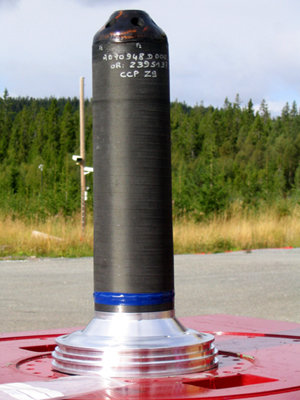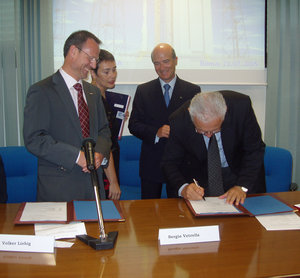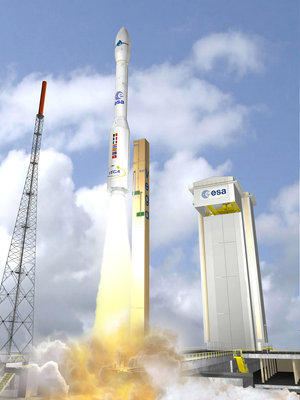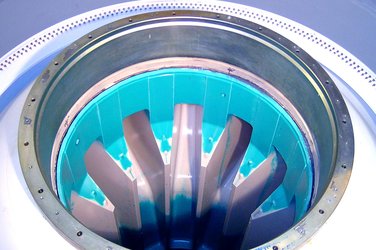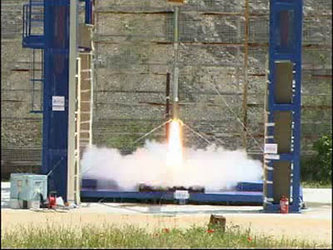Vega ground segment goes ahead
Yesterday morning the launch of Vega, Europe’s new small launcher, came one step nearer when representatives of ESA and Vitrociset met in Rome to sign the contract to complete the Vega ground segment at Europe’s Spaceport in French Guiana.
The contract was signed for ESA by Volker Liebig, ESA’s representative in Italy and Head of ESRIN and by the President of Vitrociset, General Mario Arpino. Also present was Prof. Sergio Vetrella, President of ASI, the Italian Space Agency.
During the ceremony at Vitrociset’s headquarters in Rome, General Mario Arpino described why this was an important event for the company.
“Many industrial activities in advanced technical sectors will disappear within the next decade. Space is the key to our company’s future and is becoming more important for Vitrociset. The Vega contract is a great occasion for us and important for the evolution of the Group, as it enables us to diversify and consolidate our efforts in the space sector: a sector which will continue to grow in importance.”
Vega, scheduled to make its debut flight towards the end of 2007, is designed to address market demand for small satellites in response to a move towards smaller launchers, brought about by an evolution in satellite technologies in many applications. Once in operation, this new launcher will be able to place payloads of between 300 to 2500 kg into the polar and low Earth orbits used for many scientific and Earth observation missions.
Work underway
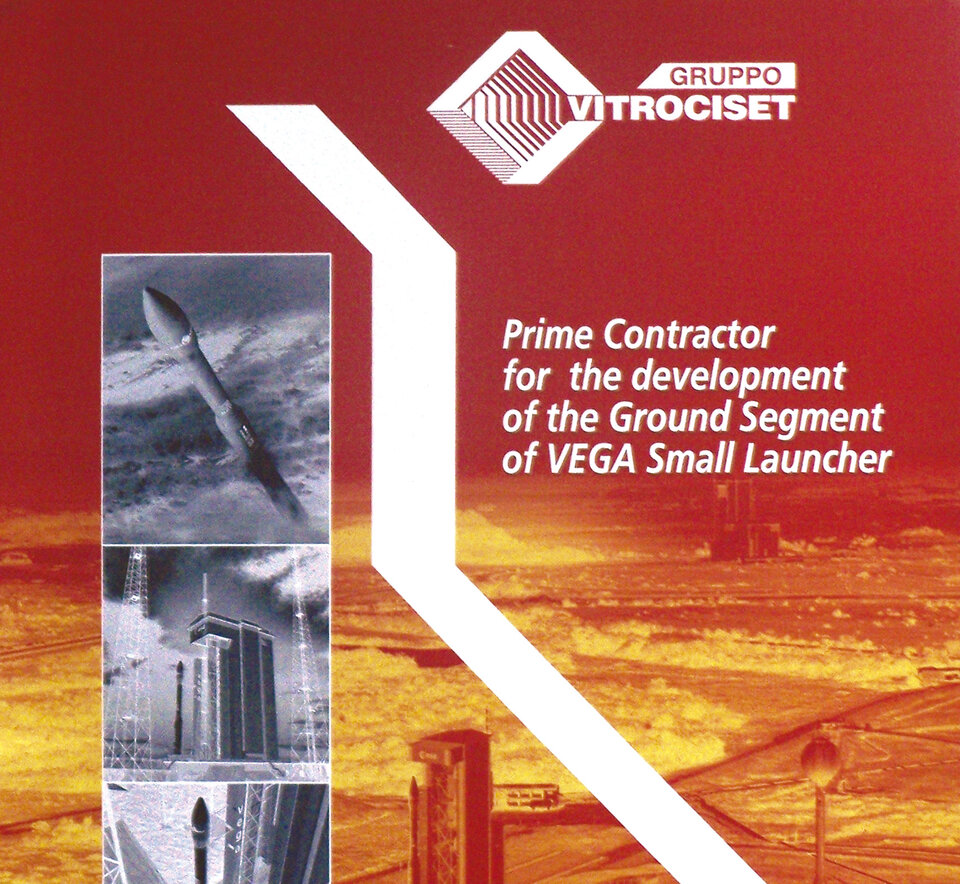
Vitrociset actually began work on the ground segment in French Guiana in August 2004, as soon as ESA gave provisional authorisation to proceed. As prime contractor, Vitrociset is responsible for coordinating the work of around 30 sub-contractors based in France, Belgium, Spain, Italy and the Netherlands. Altogether 120 European engineers will be employed on the ground segment, which is being built on the former Ariane-1 launch site at Europe’s Spaceport.
Preliminary design reviews for the mechanical and site infrastructure have already been completed. The old mast used for Ariane 1 has been removed and site preparation and refurbishment of some of the existing buildings has commenced, to adapt them for Vega.
Among the work outstanding is the preparation of the launch pad and the building of storage facilities. The launch pad will consist of a mobile gantry and a bunker, and an access road will be constructed to transport Vega from the storage facilities to the launch pad.
The launch control centre is a vital part of the ground segment and work can now begin to prepare this. To allow optimum synergy between highly experienced operational teams, Vega’s control centre will be in the same building as that used for the Ariane 5 launchers.
Vega and Ariane
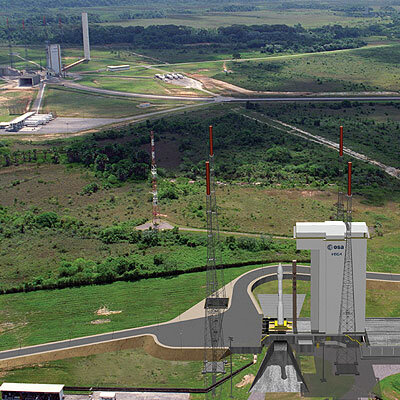
Vega differs from the Ariane 5 launchers in many ways; most visibly in its size, as Vega is ‘just’ 30 m high compared to the 56-m tall Ariane 5 ECA. The ground segment is also different. Unlike the Ariane 5 launcher, which is transported via a rail track, Vega will be moved by road on a huge 80-wheel trailer pulled by a truck. It will also be integrated and assembled in the mobile gantry on the launch pad and not in a final assembly building.
In his address, ASI President, Prof. Sergio Vetrella, pointed out another difference: the way in which ESA has structured the work. Vega is managed by an Integrated Project Team at ESRIN composed of personnel from ESA, ASI and CNES, the French space agency. The work has been assigned to three prime contractors, each of which is responsible for different aspects of the Programme: ELV SpA for the launcher; Avio SpA/Europropulsion for the P80 first stage and Vitricoset for the ground segment.
Under the terms of the contract signed yesterday, the ground segment must be completed by January 2007. This will allow qualification and operation validation to take place in time for the qualification flight, scheduled for the end of 2007.
“The end-to-end realisation of a full ground segment, within such a short period of time, is a challenge for the Vitrociset consortium’s management and technical skills,” said Volker Liebig, “but it is one which I am sure they will meet. Vega must be an affordable launcher and the efficiency of the ground sector will be an important factor in ensuring this.”



